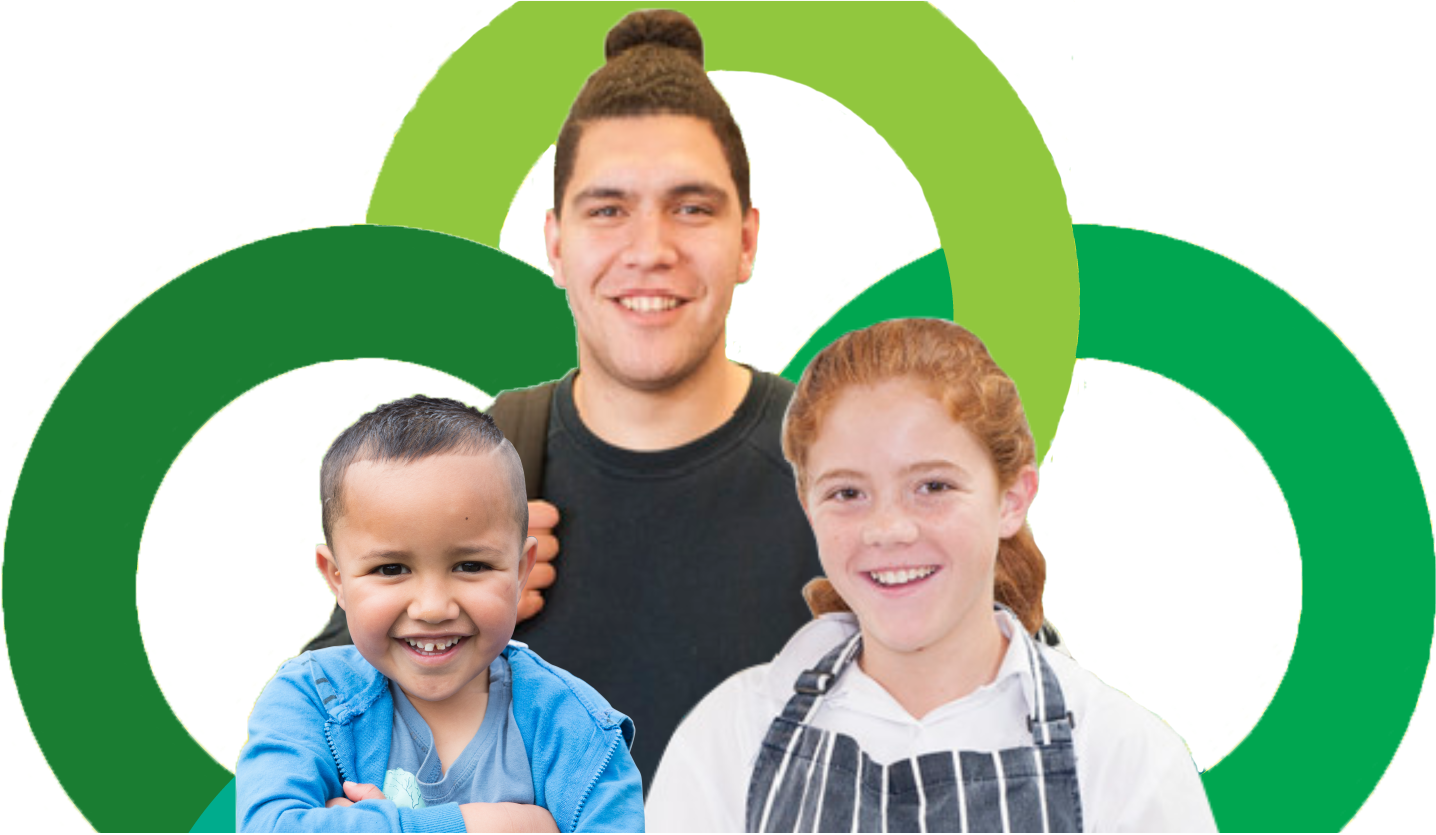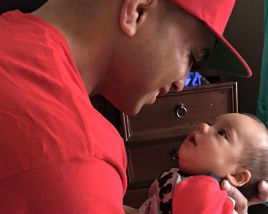
Following the decision about the characteristics to be identified, schools need to select the appropriate identification tools. You are not expected to use every tool every time, but to make a selection that best matches your context. Some kura/schools/ECE settings/Kāhui Ako develop registers or databases for collating this information about their gifted learners.
The tools below do not present a definitive list of approaches but they do comprise the most commonly used approaches that are used currently in Aotearoa New Zealand. As no single method will provide the information necessary for effective identification, kura/schools/ECE settings/Kāhui Ako are advised to select a range of approaches for this task.
The following checklists have been written for a variety of educational contexts.
Many more can be found on the internet. Kura/schools/ECE settings/Kāhui Ako could adapt these further to align with the definition developed with their communities.
They can serve as examples from which to develop unique checklists of highly valued characteristics, abilities and qualities based on kura/school/ECE setting/Kāhui Ako definitions of gifted learners or aspirational graduate profiles.
Checklist characteristics underachieving gifted students
DOCX, 20.01 KBIdentification checklist for gifted and talented students
PDF, 77.63 KBIdentification of gifted primary students in drama, dance, music and visual arts
PDF, 73.99 KBIdentifying and providing for giftedness in the early years (Allan B, 2002)
PDF, 1.13 MBIndicators for specific aptitudes - Identification checklist
PDF, 30.01 KBLe Sueur Peer Nomination Form Primary
PDF, 62.01 KBParent Information Form
PDF, 106.82 KBPeer Nomination Form
PDF, 38.79 KBProfiles of Underachievers
DOCX, 37.15 KBSigns of giftedness in young children
PDF, 18.82 KBTeacher checklist for identifying students with high ability - Secondary
PDF, 111.57 KBYoung Gifted Learners - Identification Checklist
PDF, 37.25 KBRating scales are a researched form of screening checklist that can help teachers to identify gifted and talented learners by focusing on typical behavioural characteristics. Without rating scales, some of these characteristics could be overlooked. In selecting a rating scale, teachers should check whether it includes culturally appropriate characteristics. When applying the scales effectively, teachers should consider the impact of their own cultural perspectives. For example, as Bevan-Brown (2009) points out, humour is often influenced by cultural beliefs and understandings.
While there are many rating scales available internationally, the Teacher observation scales for identifying children with special abilities (McAlpine & Reid, 1996) were developed with the assistance of classroom teachers throughout New Zealand. The scales are designed for middle primary, intermediate and junior secondary school levels. The accompanying Teachers’ Handbook contains information on the kinds of learners the scales were designed to identify, when the scales should be used, the content of the scales, information on scoring, and technical aspects of reliability and validity. The five scales relate to the following characteristics of giftedness:
Jill Brandon’s (2000) observation profile and rating scale is useful for identifying learners who have special abilities in the visual arts

"I knew from the time that my kid was young that there was something different. He wasn’t one to flow with the crowd, he kind of stood his ground and he just, he saw something he wanted and just went for it. And I kind of, all I could do with that was nurture it, get him to enjoy learning. And so I think that was what opened it up for him. He learnt to read at two and a half, and that gave him the skills to question, that gave him the confidence to push. And then I used to always say, “Whatever it is you want to do, just go for it.” And I said, “I’m here, I’m behind you, I’m not going to be able to keep up with you eventually.” Because I always knew he was going to fly. And that’s all any parent or guardian can do for them, is just give them that confidence, give them that ability, especially to read."
Parents, caregivers and whānau have a wealth of knowledge about their children that can be crucial to the identification process. While most of this knowledge is based on experiences outside the classroom, insights into the child’s motivation, interests, attitudes and special abilities are relevant to the teaching programme. Never dismiss what they tell you about their child.
Some kura/schools/ECE settings/Kāhui Ako have information-gathering forms that contain questions related to advanced development, such as early reading, advanced language skills, advanced reasoning ability and intellectual curiosity, which all can be indicators of giftedness.
While many parents and whānau have a realistic understanding of their child’s performance compared with that of others of the same age, others do not. Lack of understanding about giftedness can lead to both under- and overestimations of a learner’s ability.
While learners may not nominate themselves and parents may be reluctant to nominate their own children, it may be appropriate for other whānau members or kaumātua to make nominations. Again, such conversations should take part in the context of an ongoing relationship that values the knowledge of all participants.
"The kumara (sweet potato) does not say how sweet s/he is."
Māori and Pasifika parents may be more likely to respond to approaches that are less direct than explicit parent nomination. For example, Bevan-Brown (2009) suggests conducting informal conversations about learners’ passions and/or asking parents and whānau to complete learner profile sheets, which can then form the basis of discussions on how to best support learning at home and at school.
The New Zealand Association for Gifted Children supports gifted learners and their families through a range of services.
Parental/whānau knowledge is particularly important in relation to cultural identifiers, including heritage, culture, language and religious beliefs.

Davidson Institute, Reno Nevada. (2011)
Alvino, J. (1995) James Alvino & Associates, Ann Arbor, Michigan.
Porter, L. (2009).
Warshaw, M. (2002).
Breen, S. & Williams, K. (2011).
DOC, 51.50 KBRogers, K.
PDF, 29.65 KBWilliams, K., Purdie, S., Van der Stratten, V., & Breen, S. (2011).
DOC, 123.00 KBRussell, V. (2013). A programme for gifted Māori in an English-medium secondary school. Unpublished Master’s Thesis, University of Auckland.
Teacher nomination is one of the most commonly used methods of identification, but it is only effective when based on an informed understanding of the characteristics and behaviours that can indicate giftedness, including some behaviours that may be regarded negatively or that may signal hidden or undeveloped ability. Teachers support their judgements with the help of tools such as checklists, interest inventories, teacher observation scales, learners’ portfolios and their online presence. Teachers can also refer to evidence gathered for assessment and reporting such as: observing the process/es that learners use (this is best done with the use of an observation scale specifically designed for identifying gifted learners, based on the characteristics of giftedness) talking with learners and their parents and whānau to find out what the learners knows, understands and can do results from formal assessments, including those provided through standardised tools talking with coaches, mentors, subject specialist tutors and community leaders.
In making effective observations and judgements, teachers focus on learners’ strengths across many contexts and domains, sometimes beyond the classroom, ensuring that they use lists of culturally appropriate characteristics and behaviours. In addition, the rate of progress of learners can be an indicator of potential talent.
"It is the supreme art of the teacher to awaken joy in creative expression and knowledge."
Some teachers are qualified to design tests of their own. Some of these tests can be targeted towards learners with special abilities in specific curriculum areas. The tests may contain a high percentage of items that assess a learner’s ability to analyse, evaluate and create in a range of contexts, as well as items that are open-ended and look for divergent thinking. Some teachers also develop localised norms.
Learner portfolios can be helpful in identifying gifted and talented learners, showing examples of best performance or best product, with systematic evidence of a learner’s achievement over time. They allow for a rich variety of learner choice in terms of content and preferred ways of learning, as well as encouraging higher levels of thinking and reflective practice. Information technology provides innovative ways to record and store portfolios. Social media may be linked to portfolios to showcase the wider expression of a learner’s talents and global connectedness.
Self-nomination is a useful form for identifying areas of unique special ability and interest, such as coding, gaming, poetry, music, graffiti art, acting, waka ama and social or ethical concerns. It is particularly useful at the secondary school level. This approach can give valuable insights into a learner’s self-concept, self-esteem, attitudes and values.
Self-nominations can be facilitated through teacher–learner interviews/conversations or through interest inventories and questionnaires. However, self-nominations can be subject to bias, as some learners lack a realistic appraisal of their own abilities. Learners who are reluctant to put their own name forward, despite having exceptional abilities, may find it easier to nominate areas of success in which they have achieved as part of a group.
Peer nomination can be effective for identifying learners who show special abilities both inside and outside the classroom (e.g., sporting abilities, musical abilities, social or spiritual leadership, artistic abilities, kapa haka, community service, business acumen or computing skills). Teachers can assist learners to use peer nomination by suggesting relevant attributes and behaviours that match some dimensions of giftedness and talent. For example, in the area of creativity, teachers may develop peer nomination forms with such questions as ‘Who, in your class, comes up with really clever and original ideas?’ Effective peer nomination forms consider key areas of behaviour that closely relate to the concept of giftedness and talent, including behaviours, abilities, qualities and values that are relevant to different cultural and ethnic groups. These can be helpful in identifying learners with special abilities from minority cultural groups and learners with disabilities.
Peer nomination can be used in conjunction with self-nomination and teacher nomination. They can be based on questions that are related to those on the teacher rating scale. If self-nomination is also used, the resulting triangulation can increase the reliability of the results.
"Anyone interested in the world generally can’t help being interested in young adult culture – in the music, the bands, the books, the fashions, and the way in which the young adult community develops its own language."
Despite the ubiquitous nature of social media, older gifted and talented learners may use it in particularly innovative ways. Personal websites, blogs, YouTube channels, Twitter handles, Facebook pages and Instagram images can give insights into learners’ passions and interests, including their connections to global concerns.
Many of the formal tools are standardised tests with a fixed set of test items, specific directions for administration and scoring, and norms based on a representative sample. The norms may allow for the comparison of an individual’s test score with those of other specific norm groups, such as the gifted and talented.
Standardised tests are commonly used for identifying the gifted and talented. For example, the New Zealand Council for Educational Research (NZCER) series of Progressive Achievement Tests (PAT) in reading, mathematics and listening comprehension can be useful as part of a multi-method identification process. As instruments for identifying gifted and talented learners, standardised tests have both advantages and disadvantages. Some of the advantages are high reliability, relatively high validity and their provision of national norms. Being group tests, these instruments are relatively inexpensive. However, most standardised achievement tests do not have sufficient items at the higher end of the scale to challenge gifted and talented learners. They also emphasise convergent rather than divergent thinking. Some have a cultural, linguistic and/or gender bias. Some standardised tests are inappropriate for learners who have a non-English speaking background or learning disorders.
If learners reach the ceiling with a standardised test such as asTTLe or PAT, teachers should re-test them at a higher level to get a clearer picture of the strengths and gaps, and the next steps for learning. This is called ‘above-level’ or ‘out-of-level’ testing.
Intelligence tests are another type of formal assessment. Intelligence Quotient (IQ) tests represent one of the most controversial subjects in education and beyond. Up until the last three decades of the previous century, the practice of using these tests as the primary means of assessing giftedness was widespread. As definitions of giftedness and talent broadened and as limitations of this practice became more widely known, the use of IQ tests in education diminished significantly. However, while a score lower that what is historically seen as the giftedness threshold score (usually around 130) should not be used to discount potential giftedness, those scoring above this level definitely possess cognitive abilities commensurate with intellectual giftedness.
Individual tests, such as the Stanford–Binet Intelligence Scale and the Wechsler Intelligence Scale for Children (WISC), are administered by qualified psychologists. Subjects reply orally to most questions. The WISC yields a verbal IQ, a performance IQ, and a full-scale IQ derived from all the subtest scores. Learners scoring in the upper ranges (130+) are considered gifted. An educational psychologist with experience in working with gifted learners can provide a detailed profile, including recommendations for appropriate intervention.
Tests of intelligence can be verbal or non-verbal. Non-verbal tests are designed to be relatively free of cultural bias and measure the non-verbal reasoning and general problem-solving ability of learners. They are useful for learners from non-English-speaking backgrounds.
While teachers and school leaders are not expected to be able to administer all of these tests, they need to be able to interpret their results – parents, whānau and out-of-school providers may ask for them. The most useful information is not the total score, but the details about the relative strengths and weaknesses of the learners and the way they process information.
When considering intelligence testing, it is important to consult an educational psychologist who understands giftedness.
Gaerlan-Price, E. (2015).
Prepared by Foundation for Young Australians July 2015